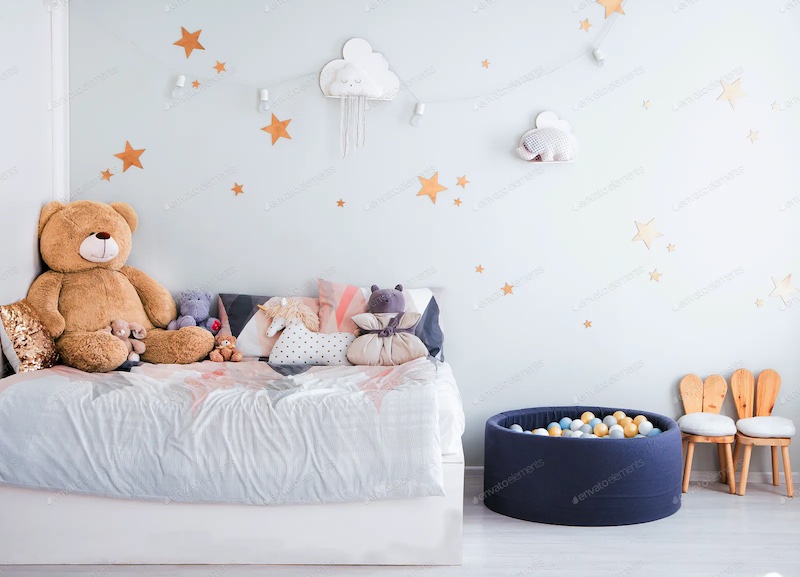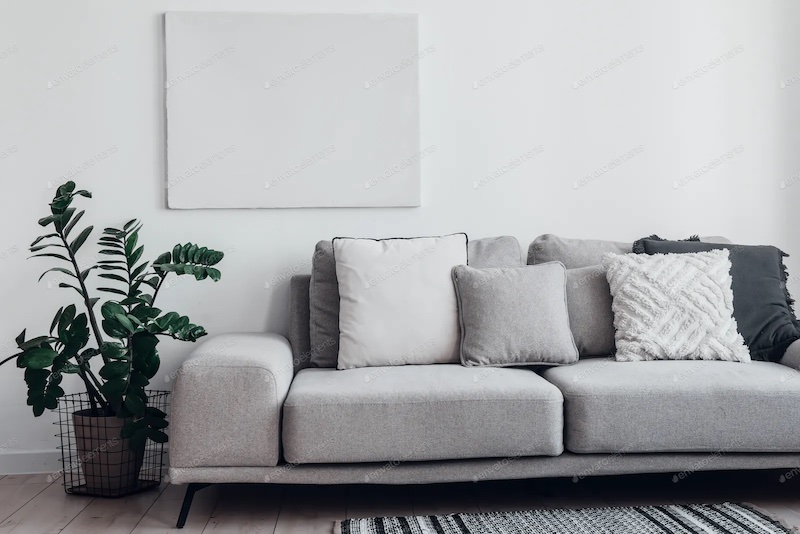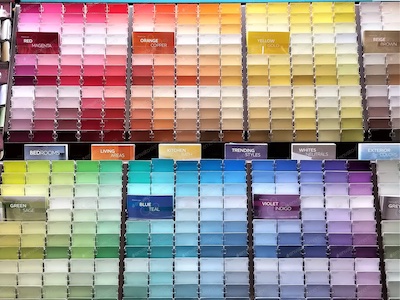The colors we choose to incorporate into our home environment can have a profound impact on our mood, emotions, and overall well-being. From calming blues to energizing yellows, each color has its own psychological effects. In this article, we will explore how colors can influence our emotions and provide practical tips on using colors effectively in different spaces within the home. By understanding the psychological effects of colors, you can create a harmonious and uplifting atmosphere that promotes a positive state of mind and enhances your overall well-being.

- Calming Blues and Tranquil Greens: Shades of blue and green are known for their calming and soothing properties. Lighter hues, such as pastel blues and soft greens, can create a sense of tranquility and relaxation, making them ideal for bedrooms and spaces dedicated to rest and rejuvenation. These colors can help reduce stress and promote a sense of serenity in your home.
- Invigorating Yellows and Energetic Oranges: If you’re looking to infuse energy and positivity into your living spaces, consider using yellows and oranges. These warm, vibrant colors can uplift your mood and stimulate creativity. Bright yellow accents or a pop of orange in areas like the kitchen or home office can create a lively and dynamic atmosphere that promotes productivity and enthusiasm.
- Serene Neutrals and Soothing Earth Tones: Neutral colors such as beige, gray, and taupe provide a sense of balance and simplicity. They create a neutral backdrop that allows other elements in the room to stand out. Earth tones such as browns, tans, and soft terracottas can be used alone or in combination with other colors to create a calming and grounding atmosphere. These colors are linked to nature and can bring warmth and stability to your living spaces. When it comes to bedroom and bathroom decor, these muted tones are ideal for creating a relaxing retreat.
- Passionate Reds and Energetic Pinks: Red is a powerful color associated with passion and energy. It can evoke strong emotions and create a sense of excitement. However, using red in large amounts or in areas meant for relaxation might be overwhelming. Consider incorporating touches of red or its lighter counterpart, pink, in spaces where you want to add a sense of liveliness and energy, such as a workout area or a social gathering space.
- Harmonizing Purples and Balancing Grays: Purple combines the calming properties of blue with the stimulating effects of red, making it a versatile color for creating a balanced atmosphere. Lighter shades of purple, such as lavender or lilac, can bring a sense of tranquility to bedrooms or meditation spaces. Gray, often associated with stability and neutrality, can create a sense of calm and sophistication when used strategically in various areas of the home.
- Personal Preference and Cultural Influences: It’s important to consider personal preferences and cultural associations when choosing colors for your home. Different individuals may have varying emotional responses to certain colors based on their experiences and cultural backgrounds. Take into account your own preferences and the overall ambiance you wish to create.
- Soothing Pastels for Children’s Rooms: Soft pastel shades, including light pinks, blues, and yellows, are commonly used in children’s rooms. These gentle colors have a calming effect and can create a peaceful environment for restful sleep and play. Consider using a comfortable and easy-to-clean vinyl flooring, which is ideal for households with children. You can even go for brightly colored and patterned tiles to create a fun atmosphere.
DIY Tips for Creating a Serene Atmosphere

- Create a Zen-Inspired Meditation Corner: Set aside a small area in your home dedicated to meditation and mindfulness. Use neutral colors like soft grays or pastel hues to create a serene ambiance. Add floor cushions or a comfortable chair, a low table for essential oils or candles, and incorporate elements of nature such as indoor plants or a tabletop water fountain. This peaceful retreat will provide a tranquil space for quiet reflection and relaxation.
- Creating a Serene Oasis: To achieve a peaceful and serene environment, it’s essential to extend your decor efforts beyond the interior of your home and incorporate your landscape, including elements like driveway pavers. Incorporating natural elements into your outdoor area can improve your well-being, and hosting a gathering outside can take advantage of this peaceful environment. You can invite loved ones to enjoy your outdoor oasis by decorating the space and providing food, drinks, and entertainment. If you’re looking for fun party activities for children, consider water slide rentals Tulsa OK.
- Embrace Natural Materials and Textures: Integrate natural materials like wood, bamboo, and stone into your home decor. Opt for furniture pieces with organic shapes and textures that evoke a sense of harmony with nature. Consider adding a natural fiber rug or curtains to bring warmth and an earthy feel to the space. By surrounding yourself with natural elements, you can create a soothing and grounding atmosphere that connects you to the outside world.
- Use Soft Lighting for a Calming Ambiance: Harsh lighting can disrupt your sense of peace. Instead, opt for soft, diffused lighting throughout your home. Use floor or table lamps with warm-toned bulbs or install dimmer switches to adjust the intensity of your existing lighting fixtures. Incorporate soft, sheer curtains to allow natural light to filter in gently. By creating a cozy and inviting atmosphere with gentle lighting, you’ll establish a soothing environment that promotes relaxation and tranquility.
- Declutter and Organize for a Clear Mind: A cluttered space can contribute to a cluttered mind. Take time to declutter and organize your home, creating a sense of calm and order. Start with one area at a time, removing unnecessary items and finding proper storage solutions for essential belongings. Use decorative baskets or bins to keep everyday items tidy and accessible. As you create a more organized environment, you’ll experience a greater sense of peace and clarity in your living spaces.
- Incorporate Calming Scents and Essential Oils: Fragrances have a powerful impact on our emotions and well-being. Use aromatherapy to enhance the peaceful atmosphere in your home. Consider diffusing essential oils like lavender, chamomile, or sandalwood, known for their calming properties. Alternatively, place scented candles or sachets with soothing scents around your home. These natural fragrances will create a tranquil ambiance and help you relax and unwind.

The colors we choose for our home can significantly impact our mood, emotions, and overall well-being. By understanding the psychological effects of different colors, we can create living spaces that promote relaxation, productivity, and a positive state of mind. Whether you opt for calming blues, energizing yellows, or harmonizing purples, each color has its own unique qualities that can transform your home into a haven of well-being. So, next time you’re redecorating or painting a room, consider the psychological effects of colors and choose wisely to create an environment that supports your desired mood and enhances your overall quality of life.

